Shoulder Anatomy
The shoulder complex is made up of three bones; the humerus, scapula and clavicle. Together these form a ball and socket joint. Shoulder is the most mobile joint in your body and is therefore dependent on strong muscles, ligaments(including the joint capsule) and a rim of cartilage(called the labrum) to stabilise it during movement.
What is shoulder instability ?
The shoulder can dislocate (the ball comes completely out of the socket) or subluxate (the ball comes partially out of the socket). Shoulder instability is the result of damage to the shoulder ligaments that keep the ball connected to the socket.
How does shoulder instability occur ?
Shoulder ligaments tear from a single violent injury, such as a football tackle or motor vehicle accident. However, they can also be stretched from repeated strenuous use.
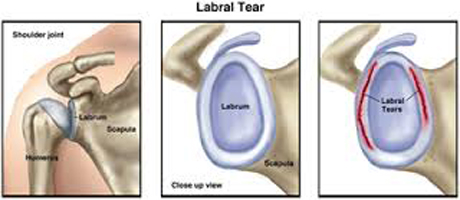
How do I know my shoulder is unstable ?
In many cases, the patient knows they have shoulder instability because they need someone to reduce the joint back into place. In other cases, the patient primarily complains of pain in the shoulder, with subtle feelings of slipping. The examination in the office usually confirms the diagnosis of shoulder instability.
Investigation
X-rays are usually ordered to make sure there are no fractures (broken bone) in the shoulder. Commonly, a small fracture in the area of the dislocation can occur on the humeral head, called a Hill-Sachs lesion.
A MRI can sometimes be helpful to confirm the tear of the ligament off of the bone (Bankart lesion), and evaluate for other shoulder problems.
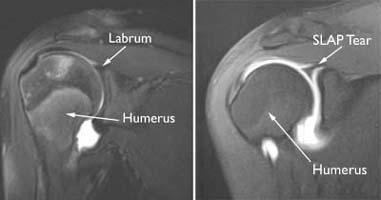
Which structures are damaged in case of instability ?
The labrum (where the shoulder ligaments attach) is usually torn in cases of shoulder instability. In addition, there are sometimes fractures of the ball or socket of the shoulder. Rarely, there is also a rotator cuff tear in cases of instability.

What are the treatment options for shoulder instability ?
The treatment primarily depends on the patient’s age, activity level, and number of dislocations of the shoulder. When a patient dislocates their shoulder for the first time, they can commonly be treated in a sling with early rehabilitation. However, for patients with repeat episodes of instability, the usual treatment is surgery to fix the ligaments.
How is shoulder instability treated with surgery ?

Shoulder instability is usually repaired with arthroscopic techniques. The arthroscope is a fiber optic instrument that is placed into the joint through small incisions. The arthroscope allows me to fully evaluate the entire shoulder joint, including the ligaments, the rotator cuff, and the cartilage surface. Small instruments ranging from 4-5 millimeters in size are inserted through additional incisions so that any injury can be diagnosed and damaged tissue can be repaired, reconstructed, or removed.

In shoulder instability surgery, the damaged labrum and ligaments are identified and then repaired back to the socket. This is usually performed by using suture anchors to sew the ligaments back in place. In most cases, a bioabsorbable anchor (an anchor that dissolves over time) is used. Occasionally, a metal anchor is used.
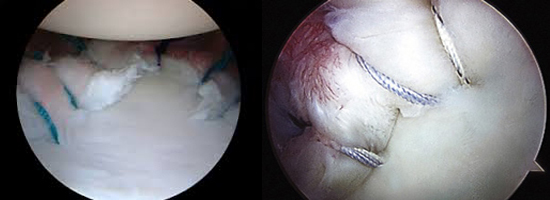
Occasionally, if the damage is severe or longstanding, the surgery needs to be performed with an open incision.
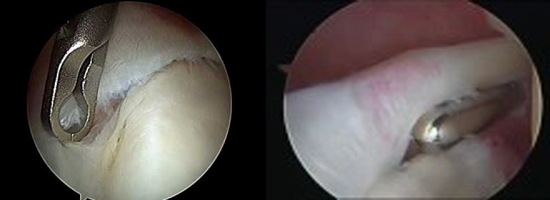
What kind of anesthesia is used ?
A combination of general anesthesia and regional anesthesia is used for most surgeries.
When can I go home?
- When your pain is controlled.
- When you can manage your sling. This takes approx 24-48 hours.
How should I care for my shoulder after surgery ?
Prior to your discharge, you will be given specific instructions on how to care for your shoulder.
Diet : Resume your regular diet as soon as tolerated. It is best to start with clear liquids before advancing to solid food.
Showering : You may shower after your dressing is removed.
Sling : You will have a sling, which you will use for 4 weeks. You can remove it for grooming and physical therapy.
Medication : You will be given Analgesic to control pain.
Ice : You may apply ice over the dressings for 30 minutes every hour for few days. Do not use heat.
Suture removal : Your stitches will be removed 10 days after surgery
Exercise : You will start physical therapy within 1 to 2 weeks after surgery.
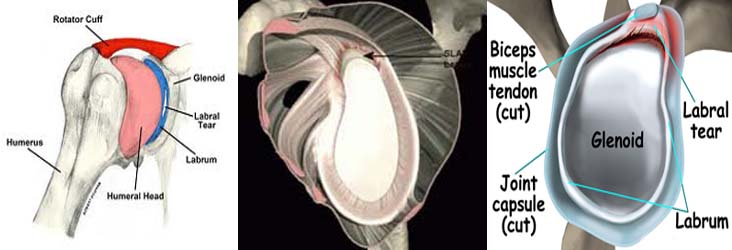
When can I do my normal activities ?
This depends upon your symptoms. You can return to work within 3 – 5 days without using the affected arm.
When can I return to sports ?
You must have good motion, strength, and control of your shoulder and arm. How quickly you return to sports depends on several factors, including:
- Your own rate of healing.
- The damage found at surgery.
- How well you follow the post-operative instructions.
- How hard you work in rehabilitation.
| Light work (no lifting) | 6 weeks |
| Medium(light lifting below shoulder level) | 6 weeks onwards |
| Heavy(above shoulder level) | 3-6 months |
At 8-10 weeks you can carefully return to light low risk activities, such as breaststroke swimming and jogging. At 3 months, you can return to free style swimming. At around 6 months you should be able to return to full scale contact sports provided you have regained strength and, most importantly, control and confidence. It is usually best to discuss this with your surgeon first.